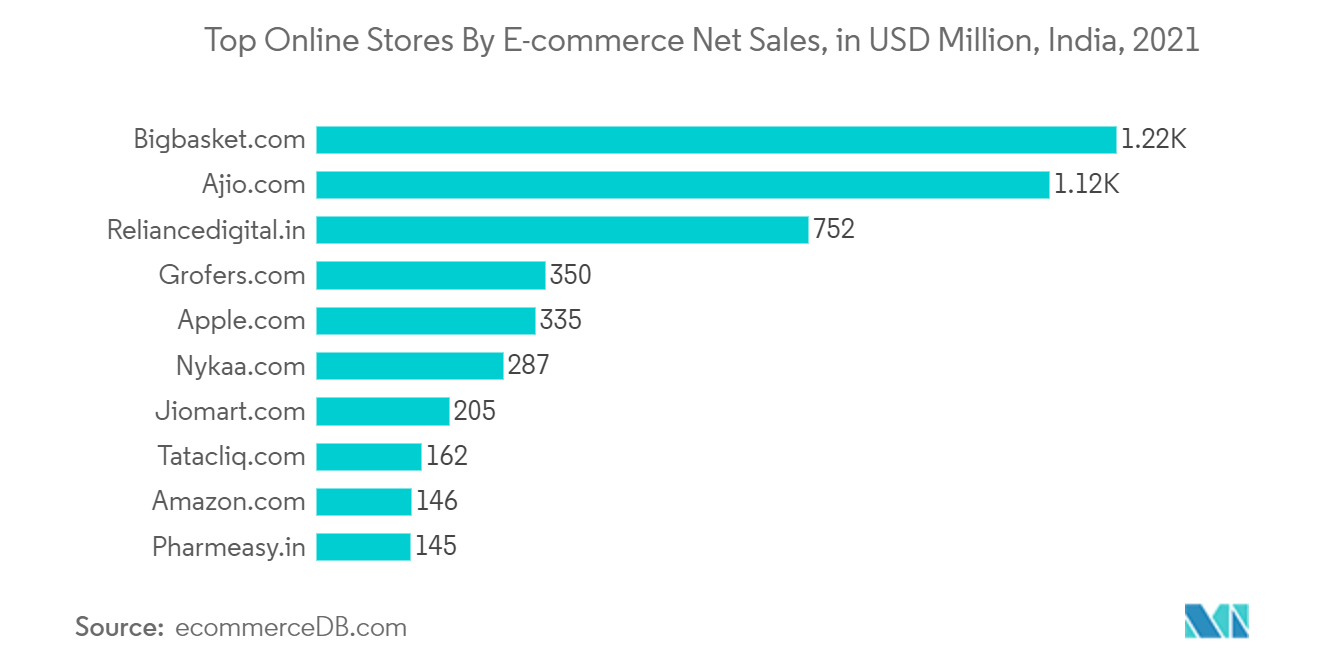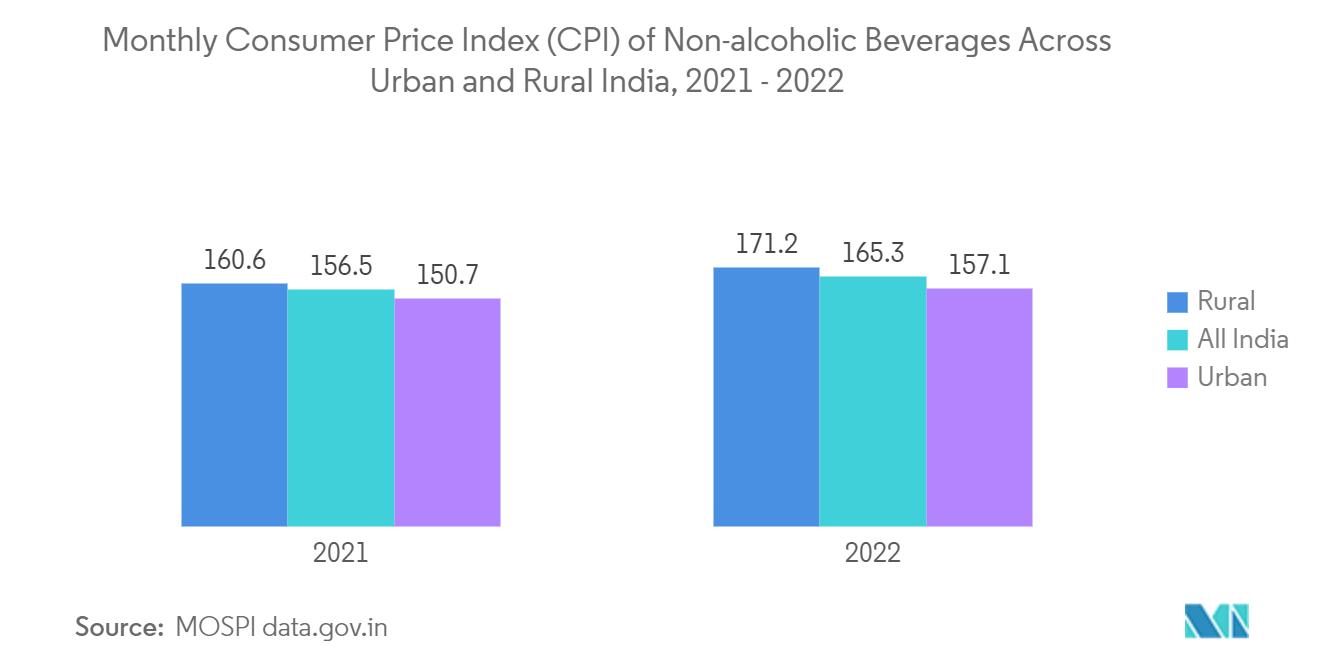Market Trends of India Warehouse Automation Industry
This section covers the major market trends shaping the India Warehouse Automation Market according to our research experts:
Exponential Growth of E-commerce in India
- The e-commerce boom in India has benefitted several industries in India, especially the supply and logistics sector, wherein data science is applied increasingly for shipment tracking. With the continued rise of online shopping and changing buyer expectations, speed and accuracy of delivery have spurred e-commerce companies to find a faster way to reach customers.
- The retail fulfillment paradigm shift is witnessing a new dimension, with e-commerce giants competing fiercely to fulfill faster deliveries. Warehouse automation and control system sales stimulate growth by boosting operational efficiency. Warehouse automation forms the backbone of e-commerce players in India, such as Amazon, Flipkart, and Bigbasket, among others.
- For instance, Noida-headquartered Falcon Autotech Pvt. Ltd provides its automated solutions from the warehouses of prominent e-commerce portals. Companies, such as Amazon, are acquiring large automated warehouses on lease and also acquiring robotic warehousing companies worldwide.
- Most offline traditional grocery stores are expected to have an online version, making the in-store shopping experience more holistic and ensuring that the lack of shelf inventory is made up by warehouse inventory, increasing the customer loyalty base in this process.
- According to ecommerceDB.com, Bigbasket.com is leading the Indian e-commerce market, with net e-commerce sales of USD 1,222 million in 2021 generated in India, followed by ajio.com with USD 1,119 million. Moreover, the third place is taken by reliancedigital.in with revenues of USD 752 million, and Grofers.com is India's fourth most significant online store, with net sales of USD 350 million in 2021. This indicates the growth of the e-commerce sector in India.

Labelling Equipment to Hold a Significant Share
- Historically, all the warehouses in India were designed based on the tax structure and not on the supply chain synergies. For example, in the pre-GST era, the companies maintained warehouses in each state to save the heavy taxes. As a result, companies had to handle several small and sub-optimal warehouses.
- Labeling equipment is a crucial component for any production line in the FMCG industry. In addition to the basic structure, the machines also feature an automatic label feeder to keep track of label length and retrieve it as the product changes size. These features are beneficial in reducing downtime, increasing productivity, and reducing costs. A suitable FMCG labeling equipment will meet all of these requirements.
- Labeling equipment can create texts and graphics such as simple barcodes, 2D codes, batch codes, and expiration dates to vivid images and logos. There are two levels of labeling equipment automation: semi-automatic labeling equipment and automatic labeling equipment.
- The adoption of packaged food will drive the studied segment of the market. For instance, according to USDA Foreign Agricultural Service, in 2021, the sales volume of ready meals in the Indian packaged foods market accounted for 40 thousand metric tons.
- In June 2022, Printgraph Converting Machinery, a Mumbai-based company, along with Macrt and Perfect Printgraph Engineers, launched digital labeling equipment at the 15th Printpack India. The machine known as TruWo will meet the demands of the labeling and packaging of FMCG products, further driving the studied market.
- The increasing consumption of non-alcoholic beverages is one of the significant factors that could boost the adoption of labeling equipment in warehouses over the forecast period.
- Many consumer goods brands in the country are expanding their FMCG business and increasing their frozen food portfolio, driving the studied segment in the market. For instance, in August 2022, Reliance Retail joined the Indian fast-moving consumer goods sector by bringing Reliance Fresh and Reliance Smart, two of its private label brands offered in its supermarkets and hypermarkets, to the general public. For the FMCG sector, which would be a part of Reliance Retail's consumer brand division, the company had set a target of INR 50,000 crore (USD 6.115 billion) in revenue. It intends to sell various goods, including food, non-food, and home care items.


